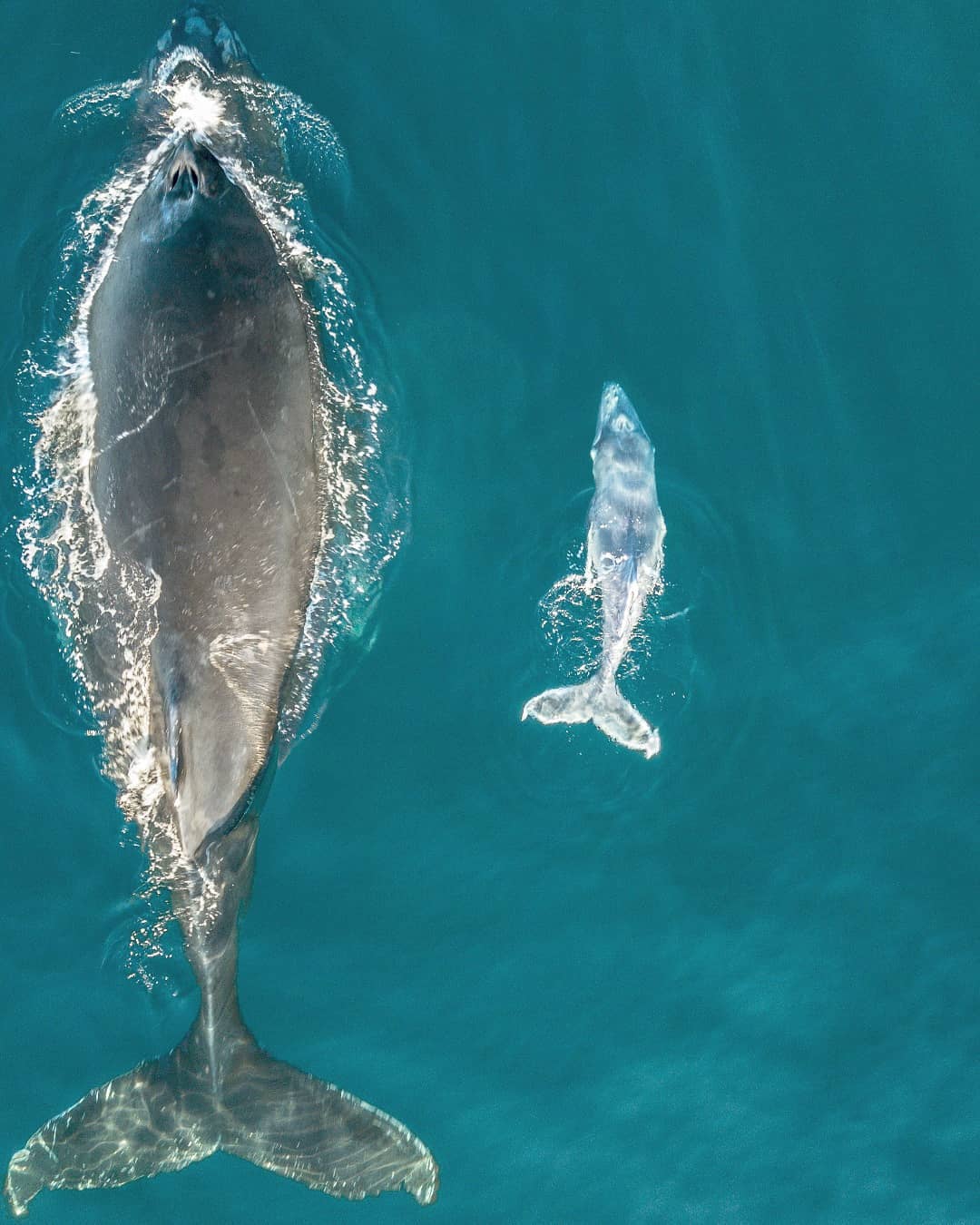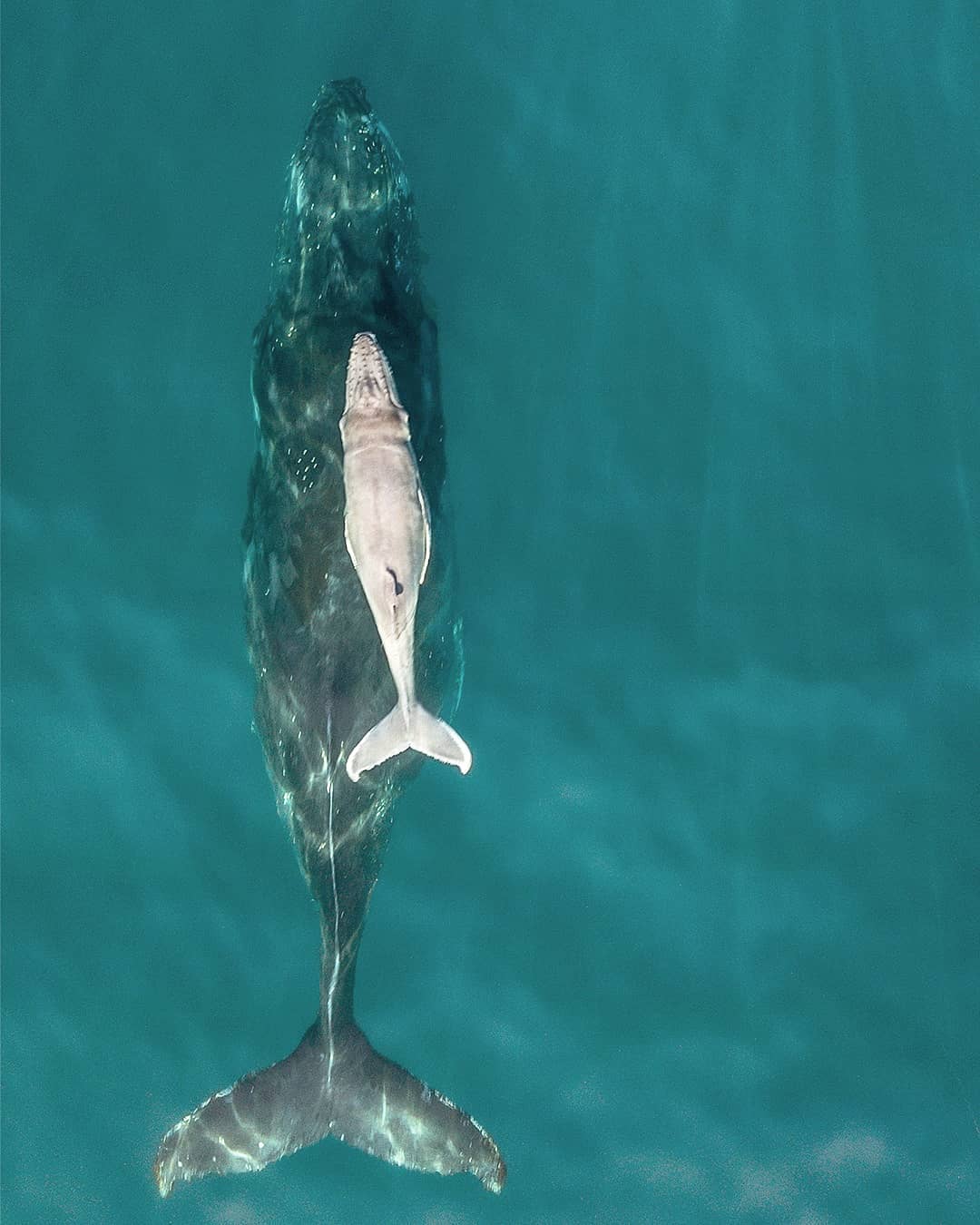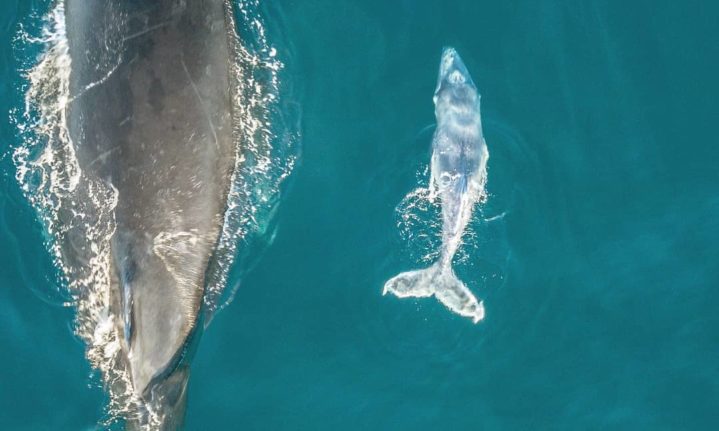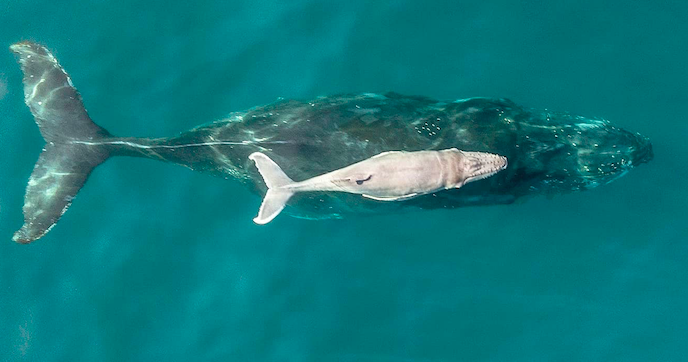Photographer Stuart Gillmer captured an incredible sighting in Nelson Mandela Bay in Port Elizabeth. Using his drone, Gillmer was treated to two separate sightings of a mother humpback whale with a calf in tow.
Gillmer had seen some activity in the water, around 500m off shore. ‘Being so close to shore, it was easy to spot them with the naked eye,’ he said.
‘As I entered the parking lot my girlfriend and I immediately saw a whale close to the shore, moving very slowly and surfacing regularly. Usually you would see whales surface a couple of times before they dive for a few minutes and then resurface for air.
‘The Humpback Whales usually pass PE around this time of year. I have spotted them regularly since mid-June where I would watch from one particular spot in Port Elizabeth. Sometimes a bit of patience is required. The majority of the time they’re clearly visible from land by seeing the whales surface for air with an impressive spray, or by seeing them breach out of water.
The two sightings took place fairly close to one another. ‘I had no idea that there was a calf swimming with it’s mother until I took the drone out. I was lucky enough to capture the moment, keeping my drone high enough not to disturb the marine life (the image was zoomed in as well as cropped in during post production). It also helped that it was a perfect day with not a breath of wind out (the ocean “chop” created by the wind makes it more difficult to spot marine life).’
Gillmer was in the right place at the right time. ‘Funny enough there was a second humpback whale swimming with it’s calf. As I brought the drone back in I saw the second cow and calf from the parking lot. It was directly out where I had spotted the first cow. I was fortunate enough to capture the pair together. In both instances the calf kept near to it’s mother, gliding along slowly and surfacing more regularly for air.
‘Apart from whale sightings, I have also seen plenty of Bottlenose dolphins swimming along the coastline of Nelson Mandela Bay. It’s been amazing to see the wildlife so active and this close to shore. We’re really lucky to have such amazing wild and marine life in South Africa, sometimes it’s just around the corner if you go out and look for it.’
Getaway Magazine spoke to Marine Biologist Sandra Hörbst from Dyer Island Cruises about the sighting. ‘While the calves appear white in the photos and almost look like albinos, humpback whale calves are usually born light grey and darken with age,’ said Hörbst.
Albanism can occur in humpback whales but interestingly it has never been recorded in Southern right whales.
Southern rights can give birth to a brindle calf though. This is also a genetic mutation but pigmentation is likely to develop later on. Humpback whales do not give birth to brindle calves.
Hörbst said: ‘Around 94% of brindle southern right whales are male. It has to do with genetics. Half of the genetics come from dad and half are from mom. With Southern rights, you get half brindles which are called grey morphs. These are identified by a grey V shape on their back. So for instance, if you have a grey morph female and a brindle male then you get a brindle baby.’
Brindle Southern right calves are seen somewhat regularly in South Africa. Hörbst said that about 4% of Southern right births are brindle. She also said that in North Atlantic right whales this mutation is not found. ‘It’s like a mutation that happened in Southern hemisphere but not in the north.’
Brindle babies are also found in Australia and Argentina where Southern right whales occur.
Take a look at the special sighting below.

The first cow cruising along with her calf.

The second cow with calf in tow.
Humpback whale facts:
Adult female humpback whales grow to an average of 12-16m in length.
Adult male humpback whales are smaller and grow to an average of 11-15m in length.
Calves measure 4-4.6m when they are born
Calves can weigh between 0.6-1 ton at birth
Brindle calves only occur in Southern right whales, not in North Atlantic right whales
Albanism can occur in humpback whales and not in Southern right whales
Image credit: Stuart Gillmer




















